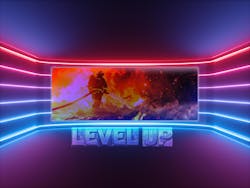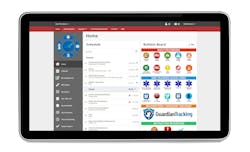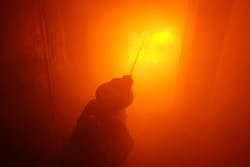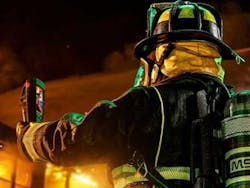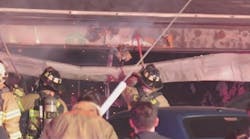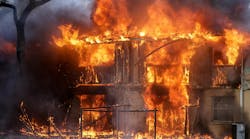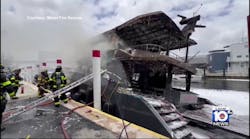Reflect on the last time that you played a game. For some of you, it might have been in the late 1980s as you tackled the challenges of Super Mario Bros. You ran left to right in a two-dimensional world and jumped on turtles and slid down green pipes in a quest to advance to the next (and more difficult) level.
Maybe you played one of the games in the Call of Duty first-person shooter franchise. You traveled a map to learn about the area through exploration while honing the skills that were necessary to fight enemy combatants. Perhaps you played the same game as part of a team that competed against another team to amass the most points through eliminating the enemy or meeting benchmarks.
Maybe you competed against members of your family in a card-based board game that was rooted in trivia, with you and the others displaying factual knowledge about sports, entertainment, history, geography, pop culture etc., to reach different levels of success.
Maybe it was a phone-based video golf game, where you honed your skills with different golf clubs by repeatedly practicing under different conditions until you mastered various clubs.
Each of the examples that are noted above involves elements of gamification that are designed to both challenge and increase the knowledge and skill level of the person who is playing the game. Those elements can be used to improve firefighter training programs.
Gamification defined
In his book, “The Gamification of Learning and Instruction: Game-based Methods and Strategies for Training and Education” (Pfeiffer, 2012), Karl Kapp, who is a professor of instructional technology, defines gamification as “… using game-based mechanics, aesthetics and game thinking to engage people, motivate action, promote learning, and solve problems.”
Gamification involves the incorporation of certain elements that require learners to repeatedly practice, to work toward goals and to receive feedback on their progress. In an overly simplified nutshell, gamification can be thought of as learning by doing over and over again with multiple feedback mechanisms.
Reflecting on games that you played through your life, you might be able to parse individual elements of gamification (see “Elements of Gamification,” next page) from your gameplay experiences. You likely were asked to take on a task to achieve a goal. The mastery of each task or skill resulted in being introduced to a higher-level task or skill challenge. There might have been a point system to let you know how you were doing in the game. You might have received very quick feedback on your efforts (injuries sapped your strength, a fall off of a cliff resulted in the loss of a life or a correct answer triggered a pleasant sound or graphic).
Although these concepts seem native to computer-based gaming, certain principles are being used in workplace training to improve learner skill and knowledge retention.
In vocational training, incorporating principles of gamification can encourage improvement in behavior, increase engagement and allow students to keep track of progress. When it comes to points and competitions, training program designers can make choices as to whether they want participants to compete against each other or against a standard. Training designers know that repeated actions improve behavioral traits and skills.
The process of developing a training session that uses principles of gamification requires the training session designer to create very clear and tight objectives and to incorporate multiple feedback mechanisms.
Incorporating elements of gamification is a change from what the fire service does now. Many of our educational models rely on a content-first-and-action-second delivery model. Gaming tends to put an emphasis on action first and content delivery along the way. Current firefighter training models don’t look at failure as a positive characteristic, whereas gaming looks at failure as a step toward competence and even toward mastery.
Uses in the fire service
Nothing about gamification is intended to imply that training, learning and preparing for the job of a firefighter is a “game.” A game is completed in a virtual and safe environment, whereas using gaming principles in real-life, hands-on training environments poses elements of risk. Being able to perform skills correctly and efficiently or making sound decisions quickly can make the difference between life and death in our profession. Instead, the concepts of gamification can improve firefighter performance, because the concepts are aimed at increasing knowledge retention and skill development.
The goal of incorporating gamification elements into fire service training aligns with a call to action that Kapp issued: “Let’s situate learners in authentic environments in which they can practice their skills and gain immediate feedback on progress and accomplishments, earn recognition for doing well, and feel good for overcoming a challenge.”
The principles that successfully contribute to learning in the video game environment can be utilized in fire service training sessions and on the training ground.
It probably isn’t wise, or even possible, to use each and every element of gamification in fire service training. Fire officers, fire instructors and training program managers can incorporate select elements of gamification to improve and modernize training.
One potential area of extra caution in the fire service training arena is the idea of making mistakes in “safe” environments. Two important elements of gaming are to allow repetition for practice and to allow for failures. Training program designers must be cautious and design the training session in accordance with current standards, policies and standard operating guidelines to ensure that we prevent unnecessary harm to firefighters and/or damage to equipment. In a game, when you fall off of a cliff, you learn not to do that again. In rope rescue training, that could be very bad.
In the classroom
A simple scenario for the classroom might find the trainer using a timer and a points system while asking firefighters about the four elements of the fire tetrahedron. The first participant to reply to a question(s) before time runs out is awarded points.
A similar scenario might find a fire instructor using audience response technology to administer a timed, low-stakes quiz about ladder company operations. Quick and correct answers allow for the development of a leaderboard as the game progresses. This scenario uses the elements of competition, leaderboards, points and timers.
In a firehouse training drill
A scenario in this realm might find the company officer designing a drill that’s based on stretching a hoseline. The drill requires firefighters to stretch the hoseline around and through multiple traffic cones and then to flow water onto a designated target before the timer expires. The officer gives the firefighters as many tries as necessary to be successful.
This drill incorporates the principles of goals & rules, timers, progress indicators, instant feedback, failure with minimal consequences, challenging but winnable scenarios, the ability to replay and incorporation of an authentic activity.
In a recruit training academy
Say a captain of a training academy prepares for the upcoming recruit class by recording tutorial videos that demonstrate how to properly perform different single-firefighter ladder raises.
The training staff prepares a “leveling up” system for assessing the ladder-raising competency of all of the students.
Each student starts the ladder-raising program with a less challenging skill and works up to the next skill when mastery at the initial level is demonstrated. The individual skills are to deploy an attic ladder, a multipurpose ladder, a 14-foot straight ladder, a 16-foot roof ladder and a 24-foot extension ladder.
Students are taught through guided practice, with an instructor coaching and providing feedback during the process. The students are allowed to review the prerecorded videos and to practice (play) on their own with instructor guidance. When the students believe that they are competent in that skill, they can ask to be tested on the current “level.” They are scored against the passing criteria on a skill sheet. If successful, the students move on to the next “level.”
This scenario uses the principles of points, goals & rules, leveling up, progress indicators, instant feedback, simple-to-complex progressions, freedom to fail in no- or low-risk environments, repeated practice and incorporation of authentic activities.
Multiple enhancements
Gamification principles can be used in different training sessions to enhance learner engagement and to improve knowledge and skill levels and can serve to modernize some components of fire service training. The use of these principles does require a good deal of work during the design and development phases of training to be successful. Consider if one or more of these principles could improve your next training initiative.
Product Spotlight
Training Management
More than 5,000 agencies rely on Vector Solutions for the company’s training management platform that’s built to track every hour of training, to improve performance and to increase firefighter safety. In its portfolio of offerings, Vector features 450-plus hours of online firefighter training; CAPCE-accredited EMS continuing education; and powerful applications for tracking International Organization for Standardization (ISO) training and compliance tasks.
Attack Digital Fire Panels
LION’s Attack Digital Fire Training Panels are ideal for enhancing firefighter training in environments where live fire isn’t permissible, such as decommissioned fire towers. The panels simulate realistic fire scenarios. They respond to water from a hoseline and to “water” from a digital hoseline. They provide a safe, interactive training experience to sharpen decision-
making and fire attack tactics.
Search & Rescue Tool
The LUNAR Connected Device, which is a handheld, wireless, personal accountability device, can be employed for search and rescue operations in mutual aid responses. LUNAR devices that are utilized by different departments that are on scene have the capability to search for other devices in alarm.
